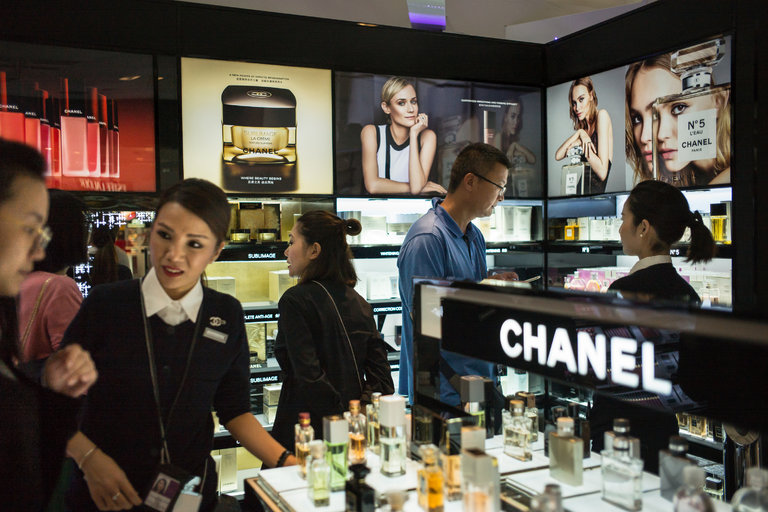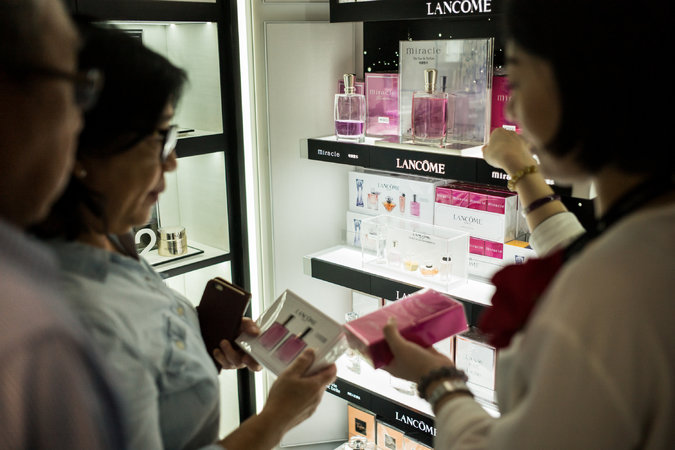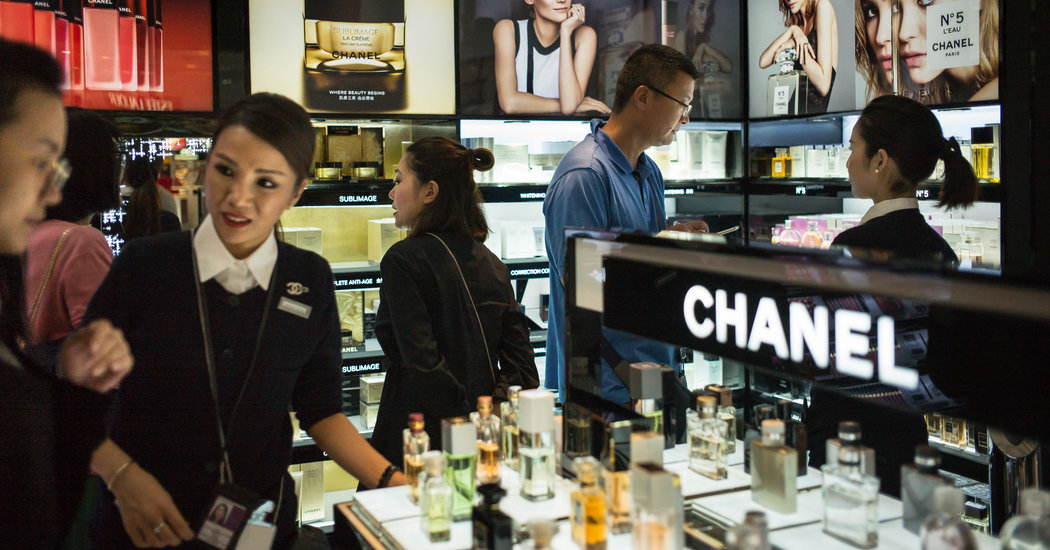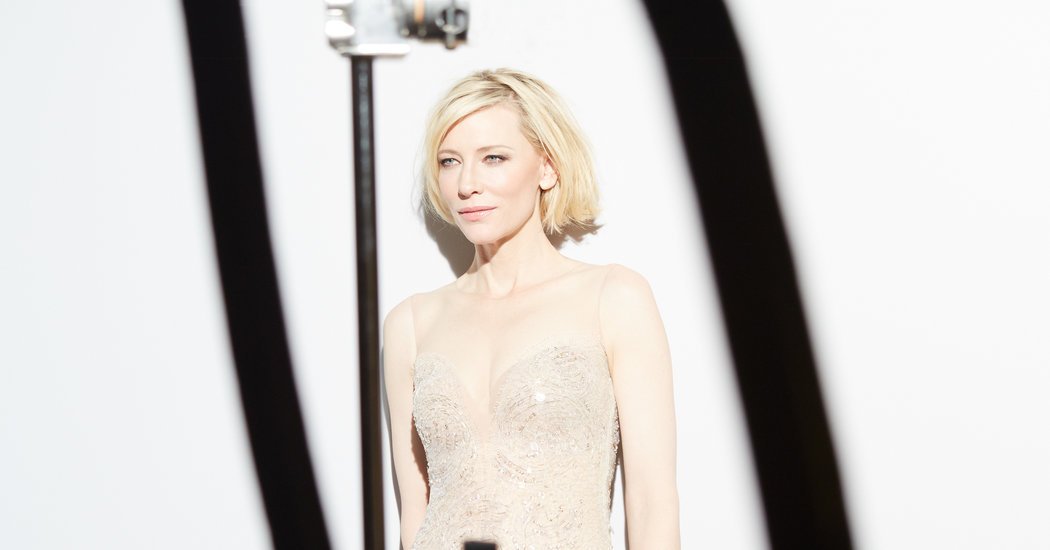
Credit
Billy H.C. Kwok for The New York Times
There was a time when buying a bottle of tax-free perfume as a gift or personal indulgence was a standard part of a trip for many travelers.
But while sales of duty-free beauty products have been rising over all in recent years, the proportion spent on scent has declined.
And even as the number of global travelers increases — it is expected to rise 3.1 percent this year — terrorism and security concerns have cut sharply into arrivals in France and Turkey, countries traditionally found near the top of the most-visited lists, and economic and political turmoil has curbed what were rising numbers of outbound travelers from other countries, including Russia and Brazil.
What’s a fragrance brand or tax-free retailer to do?
Many companies have decided to put more emphasis on those who continue to travel, tailoring their offerings to match the distinct tastes of on-the-move shoppers in specific regions.
“We are living in a VUCA world,” said Vincent Boinay, managing director of travel retailing at L’Oréal, whose portfolio of fragrance brands includes Lancôme, Viktor & Rolf and Giorgio Armani. The acronym he used — borrowed by the business world from American military jargon — stands for volatility, uncertainty, complexity and ambiguity.
And so, he continued, “one of the key rules in our business model is agility.”
That agility is needed to cope with the depressed duty-free fragrance market. In 2015, sales in the beauty category, which includes scent, makeup and skin care products, totaled $19.8 billion, with fragrance accounting for 43.6 percent, according to Generation Research, a travel analytics company.
But in 2014, the overall sales were $19.3 billion, with fragrance accounting for 48.7 percent and, in 2013, $17.5 billion and fragrance, 50.8 percent.
The decline in the percentage of fragrance sales, which can be attributed to factors including a decrease in disposable income in some countries, has been a wake-up call to businesses.
“Fragrance companies have understood that one size doesn’t fit all,” said Peter Mohn, chief executive of m1nd-set, a Swiss-based research company that focuses on travel retailing. “They really understand that they have to have a different portfolio that they offer in different regions of the world.

Credit
Billy H.C. Kwok for The New York Times
“Ten years ago that wasn’t the case — they were mostly standardized,” he continued. “Now companies are understanding more and more what travelers are looking for, so they’re adapting more to the passenger mix at the airport.”
For example, Armani/Privé, one of the brands Mr. Boinay works with, created a fragrance last year with Chinese customers in mind. Called Pivoine Suzhou, it has a scent redolent of peony (pivoine, in French), a flower that is a Chinese symbol of wealth and happiness. And the perfume’s box is detailed with lines about the flower by Liu Yuxi, a Tang Dynasty poet, written in Chinese calligraphy.
For the holiday season, a special eau de toilette edition, infused with specks of mother of pearl, is being distributed to duty-free destinations, especially those most popular with Chinese travelers.
Similarly, Miracle, a floral scent by Lancôme, is being spotlighted in some duty-free stores that cater to the Chinese, while La Vie Est Belle, another Lancôme fragrance, with iris gourmand notes combined with patchouli, is being marketed more toward Europeans and Americans.
But fragrance companies are not alone in focusing on Asia, the world’s biggest duty-free market, with more than $25 billion spent there last year, according to Generation Research.
And companies are examining Southeast Asia and the Pacific areas for opportunities as travelers, especially those in China’s growing middle class who are affected by the stalling of the country’s economy, are opting for regional trips rather than long-distance destinations.
“There is an enormous growth in inter-Asia travel,” said Erik Juul-Mortensen, president of the Tax Free World Association, a trade organization that is holding its annual global conference in Cannes, France, this week.
“I would find it difficult to not mention one place where there aren’t very interesting developments in terms of new shops being added,” Mr. Juul-Mortensen added. “It’s really across the board: You see it in Cambodia, in Thailand, in Malaysia, in Vietnam — all over the place.”
In March, DFS Group, the Hong Kong-based operator of airport duty-free shops as well as an increasing number of downtown locations in major cities, established its first store in Cambodia, in Siem Reap. The town is where tourists stay to visit the extensive Angkor Wat temples, which drew 2.1 million visitors last year, according to the organization in charge of the ruins.
“We’re opening doors where our customers are going to want to travel next,” said Ariel Gentzbourger, the senior vice president for beauty, fragrances and well-being at DFS. “The strategy is to go to these locations.”
Coffrets — packaged sets containing a selection of perfumes — are doing particularly well in the Siem Reap store, according to DFS.
Ms. Gentzbourger added that product selections in the region are being tailored to Asia’s millennials, with a focus on contemporary fragrances from brands like Marc Jacobs, Moschino and Givenchy, sometimes in smaller bottles to make them more affordable.
The Russian market has its own preferences. “Russians tend to like fragrances with a stronger character that make them differentiate a little more from others,” Mr. Mohn said. “They want to be a little more unique.”
So some Russian airports, including the three major ones that serve Moscow, often carry niche fragrance brands, like By Kilian and Escentric Molecules, according to Fatima Dzoblaeva, executive director of the Eurasian Duty Free Association. Fragrances by these brands tend to be quite pronounced.
A popular option from By Kilian, for example, mixes a heady note of oud, the heady, wood-based note sometimes called aoud, with the scent of Turkish roses.
Among the optimists about the future of travel, David Scowsill, president and chief executive of the World Travel & Tourism Council, notes that one significant event this summer actually had something of a silver lining for fragrance and duty-free companies.
In Britain, “the short term effect of ‘Brexit’ is that sterling is now 15 percent cheaper than it was against the dollar,” he said, referring to Britain’s decision to leave the European Union. “For Americans coming to the U.K., and it’s same for the Europeans, it’s a great bargain place, because your money goes further.”
And fragrance sales at Heathrow, Britain’s busiest airport, with 75 million passengers last year, have been outpacing those of 2014; from Jan. 1 through Sept. 1, average monthly sales increased by almost 50,000 bottles, according to the airport.
SOURCE:http://www.nytimes.com/2016/10/03/fashion/fragrance-duty-free-retail.html



